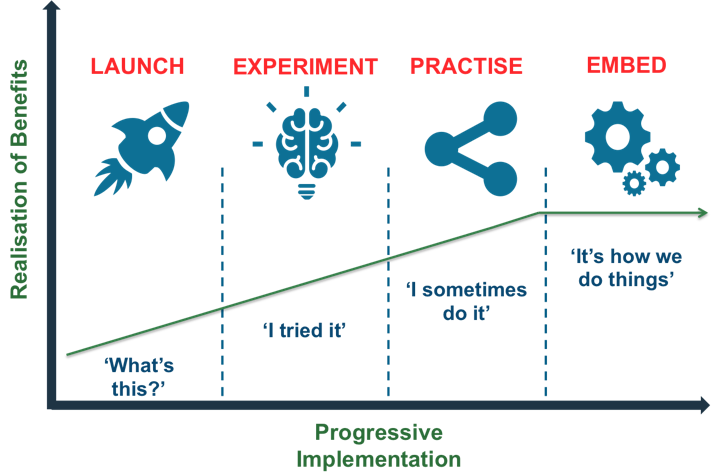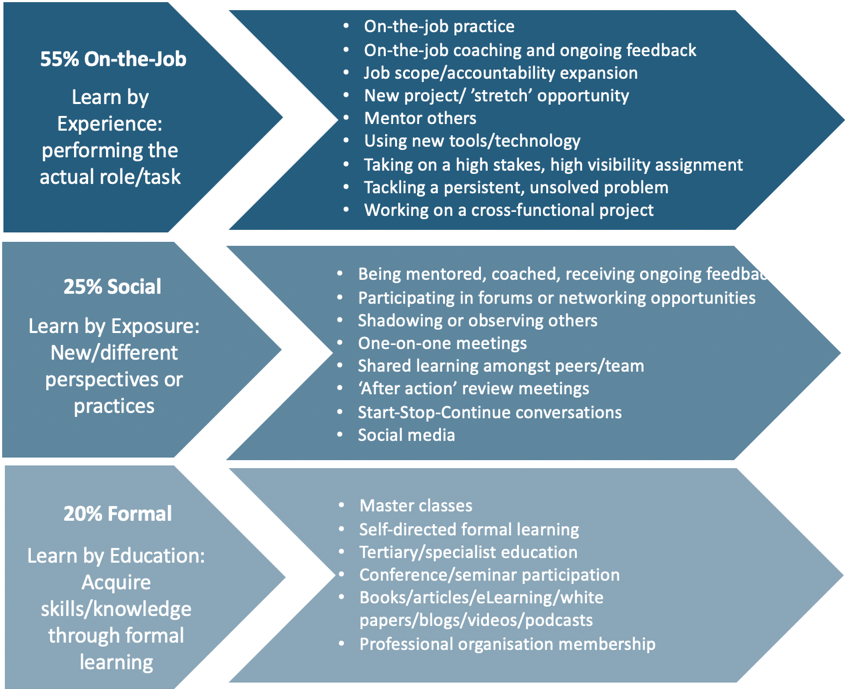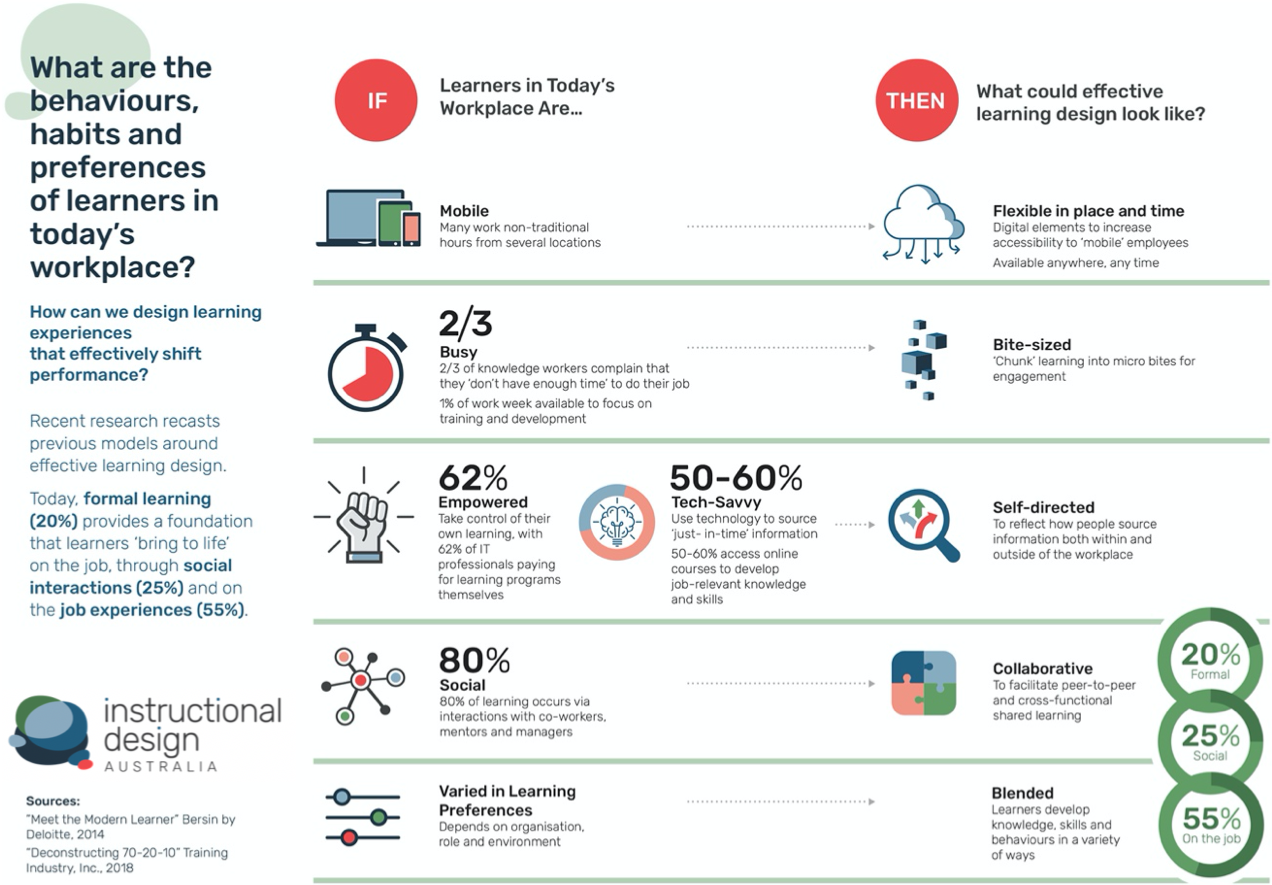Embedding Activities in Learning Design: Why Leaders Matter
Instructional Design Australia (IDA) typically recommend creating a suite of embedding activities for managers (or the L&D team) to use to support learning programs. Why?
Key statistics about embedding activities in learning design:
- Managers that are focused and effective at developing their teams outperform their ineffective counterparts by 26%
- Performance significantly raises – up to 40%
- Employee satisfaction and commitment/engagement is 38% greater [1]
Supporting Research
Gartner’s recent survey revealed that managers who provide feedback and opportunities for employees to develop and refine skills and capabilities through explicit coaching and by connecting them with other people and resources, had employees who are three times as likely to be high performers than those that didn’t. [2][1]
These employees were also found to be more involved and willing to put in additional time and energy. “Employees who report to managers who coach effectively are 40% more engaged, exhibit 38% more discretionary effort”. [1]
Managers efforts in role modelling the values, behaviours or skills and actively engaging participants in the learning program content to embed their learning is critical. Leader involvement helps participants to keep the focus of their program learning.
55:25:20 Model
Research shows that participants develop 20% of their knowledge, skills and behaviours through formal education, 25% through social interactions and 55% through on-the-job experiences. [3]
Formal learning provides the foundations that are brought to life in a real context through social interactions and on the job experiences. A manager can make those social and on-the-job factors meaningful and effective.

By creating an environment that both supports and challenges participants, you are not only enhancing opportunities to embed learning, you can also increase collaboration and in turn, improve your team’s collective performance.
Refer to the diagram for ideas on how to embed knowledge, skills and behaviours with on the job, social and formal experiences.

Source: www.trainingindustry.com (2018). Deconstructing 70:20:10; Learning and Development Roundtable Employee Development Survey, 2003
Embedding Activities
IDA develop embedding plans and activities that reflect the desired knowledge, skills and behaviours of the learning program. The questions below can be used to identify the support participants require, and therefore inform decisions around what should be included in the embedding plan:
- What are you confident in applying?
- What key knowledge, skills and/or behaviours gaps do you need to fill?
- How will you drive your own development? (Think about resources and support you require, anticipated challenges, and how you will overcome them)
- What challenges do you anticipate and how can you/we overcome them?
55:25:20 Model and Embedding in Context of the Preferences of Todays Workplaces

 Learn more about Instructional Design
Learn more about Instructional Design
- What is Instructional Design
- Understanding Instructional Design
- What Do Instructional Designers Do?
- What are the differences between Educational Design, Learning Design and Instructional Design?
- First Principles of Instruction
- The Instructional Design Method
- Learning Science
- What is problem based learning (PBL)
- Academic Articles on Instruction design here.
- Read our latest blog articles here.
References:
- Gartner (July 24, 2019). Think Employees Thrive With Constant Coaching? Think Again. Retrieved from https://www.gartner.com/smarterwithgartner/think-employees-thrive-with-constant-coaching-think-again/
- Gartner (June 7, 2018). Gartner Survey Reveals Connector Manager Approach Best for Improving Employee Performance. Retrieved from https://www.gartner.com/en/newsroom/press-releases/2018-06-07-gartner-survey-reveals-connector-manager-approach-bes
- Training Industry (2018). Deconstructing 70-20-10. Retrieved from https://www2.trainingindustry.com/Deconstructing_70-20-10
Contact Details
Office
E: [email protected]
Ph: 1300 528 736
Michael Peart
E: [email protected]
Ph: 0434 075 231
Bianca Schimizzi
E: [email protected]
Ph: 0416 013 623



